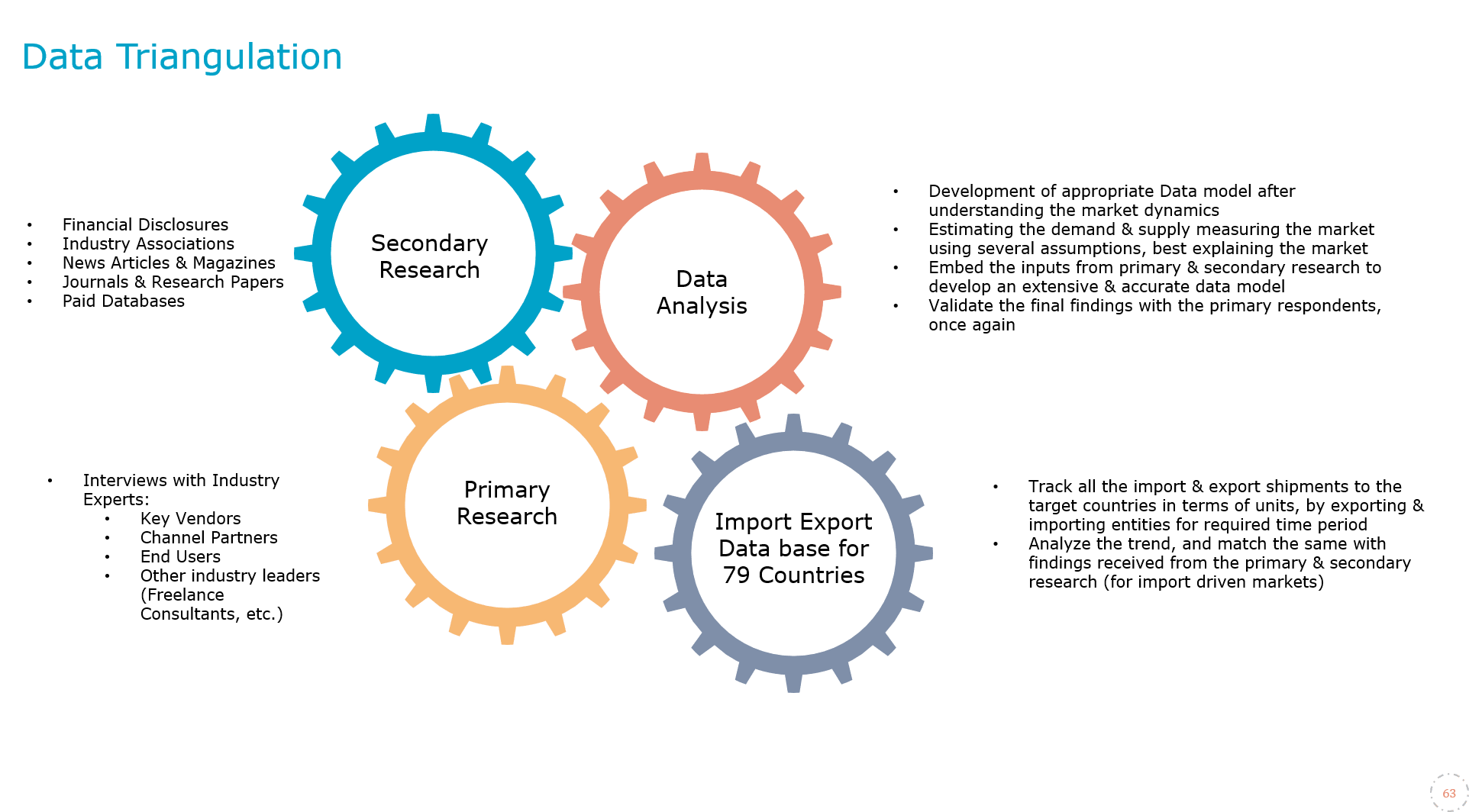
Global Mental Health Software Market Research Report: Forecast (2024-2030)
Mental Health Software Market Report - By Component (Support Services, Software, [Integrated, Standalone]), By Function (Clinical Function, [Electronic Health Records (EHR) , Clini...cal Decision Support (CDS) , Care Plans, E-Prescribing, Telehealth], Administration Function, [Patient/Client Scheduling, Document Management, Case Management, Business Intelligence (BI), Workforce Management], Financial Function, [Revenue Cycle Management, Managed Care, Accounts Payable/General Ledger, Payroll], By Delivery Model (Subscription Model, Ownership Model), By Disorder Type (Depression, Anxiety Disorder, Bipolar Disorder, Schizophrenia, Substance Abuse Disorder, Autism Spectrum Disorder (ASD), Others), By End User (Community Clinics, Hospitals, Private Practices, Payers, Patients), and Others Read more
- Healthcare
- Jul 2024
- Pages 189
- Report Format: PDF, Excel, PPT
Market Insights & Analysis: Global Mental Health Software Market (2024-30):
The Global Mental Health Software Market size was valued at around USD 3.5 billion in 2023 and is projected to grow at a CAGR of around 13.43% during the forecast period, i.e., 2024-30. One of the primary reasons is the rising incidence of mental health problems around the globe, which has raised the demand for effective control and remedy solutions. The growing utilization of digital health equipment and technological improvements have advanced the accessibility and user-friendliness of mental health software for patients and healthcare professionals. The improvement of mental health care services through government funding & support augments the size & volume of the market.
| Report Coverage | Details |
|---|---|
| Study Period | Historical Data: 2019-22 |
| Base Year: 2023 | |
| Forecast Period: 2024-30 | |
| CAGR (2024-2030) | 13.43% |
| Regions Covered | North America: US, Canada, Mexico |
| Europe: Germany, The UK, France, Spain, Italy, Rest of Europe | |
| Asia-Pacific: China, India, Japan, South Korea, Australia, Rest of Asia-Pacific | |
| South America: Brazil, Argentina, Rest of South America | |
| Middle East & Africa: UAE, Saudi Arabia, South Africa, Rest of MEA | |
| Key Companies Profiled | Cerner Corporation, BestNotes, TherapyNotes, LLC, Epic Systems Corporation, Core Solutions, Inc., Meditab Software, Inc., Netsmart Technologies, Allscripts Healthcare Solutions, Inc., Accumedic Computer Systems Inc., AdvancedMD, Inc., TheraNest, Qualifacts Systems, Inc., Welligent, Valant, Nextgen, and others |
| Market Value (2023) | USD 3.5 Billion |
The industry is also being pushed through the elevated adoption of digital mental health treatment solutions and accelerated recognition of mental health concerns. Furthermore, the capabilities of mental health software programs are being stepped forward by the use of AI and ML, presenting more individualized and effective remedies. When taken as a whole, these elements highlight the developing significance and need for mental health software solutions, ultimately driving the growth & expansion of the mental health software business.
Despite a positive future market outlook, the growth & expansion of the Global Mental Health Software Market is impacted by several significant obstacles. A notable obstacle that might impede the smooth flow of data and integration across diverse healthcare providers is the absence of common protocols and interoperability among software systems. Furthermore, concerns related to data security and privacy are critical as mental health records are extremely private and need strong security measures to prevent intrusions.
Moreover, for smaller practitioners and underfunded institutions, the high expense of deploying and maintaining cutting-edge mental health software systems may be prohibitive. Some healthcare practitioners who are used to old ways are resistant to change, which makes the shift to digital solutions difficult and delayed. Therefore, all stakeholders need to work closely to handle these obstacles, so that steady revenue growth in the mental health software industry can be maintained in the coming years.

Global Mental Health Software Market Driver:
Rising Prevalence of Mental Health Disorders – The primary motive force of the mental health software industry is a growing range of troubles associated with mental health. There is a higher demand for efficient and accessible mental health care software as mental health problems which include tension ailment, bipolar ailment, schizophrenia, substance abuse disorder, and autism spectrum ailment (ASD) emerge as more extensive globally. Electronic health records (EHRs), teletherapy platforms, patient management structures, and mobile fitness apps are some of the tools and features that mental health software offers. These equipment and functionalities assist mental health providers enhance affected person engagement, streamline administrative approaches, and offer higher care. The adoption of such digital solutions has been fueled due to the growing demand for efficient handling of mental health services, as well as the growing expertise and de-stigmatization of mental health disorders.
Moreover, the COVID-19 also brought attention to how crucial mental health care is. Thus, the post-pandemic healthcare environment is fueling the growth of the mental health software market with tremendous development and innovation as patients and providers alike look for scalable, dependable, remote treatment choices.
Global Mental Health Software Market Challenge:
Data Privacy & Security Concerns Hindering Market Growth – The mental health software industry is facing serious threats from data security and privacy concerns as these are hindering the growth & expansion of the market. Maintaining a strong data protection environment is essential because the increasing digitalization of healthcare services may open doors to hackers. Cyberattacks and data breaches target mental health software solutions because they frequently gather and retain private health information, such as diagnosis, treatment plans, and therapy progress.
Adherence to strict data protection laws necessitates continuous investment in cybersecurity systems and procedures, and it adds complexity. Inadequately addressing these issues can erode patient confidence, result in legal ramifications, and prevent healthcare professionals from using mental health software solutions. To promote trust and guarantee the secure and moral use of patient data, stakeholders in the global mental health software market continue to place a high priority on navigating data privacy and security issues.
Global Mental Health Software Market Trend:
Integration of AI and ML Gaining Momentum – The increasing adoption of AI (artificial intelligence) and ML (machine learning) is changing market dynamics because these tools offer better outcomes in diagnosing, treating, and managing mental health issues. To help doctors make more precise diagnoses and individualized treatment regimens, artificial intelligence (AI) systems can evaluate enormous volumes of data from genetic profiles, behavioral patterns, and patient records. Mental health software can now continually learn from and adjust to real-world data due to machine learning techniques, which improve its capacity to forecast patient outcomes and suggest successful therapies.
Because AI and machine learning enable data-driven insights into the efficacy of different therapies and interventions, they also show potential for advancing mental health research. Mental health software companies may create novel solutions, enhance patient results, and further the worldwide progress of mental health care by utilizing these technologies. Therefore, AI and machine learning will play a major role in determining how the market for mental health software develops during the forecast period by promoting accessibility, efficiency, and personalization in mental health services.
Global Mental Health Software Market (2024-30): Segmentation Analysis
The Global Mental Health Software Market study of MarkNtel Advisors evaluates & highlights the major trends and influencing factors in each segment. It also includes predictions for the period 2024–2030 at the global level. Based on the analysis, the market has been further classified as:
Based on End User:
- Community Clinics
- Hospitals
- Private Practices
- Payers
- Patients
The global market for mental health software is mostly driven by the patient segment, who make up a sizable end-user population. The patients segment has held a major market share in the past few years. Software for mental health addresses the requirements of patients by offering resources for therapy, self-management, and condition monitoring. Features like medication management, mood tracking, cognitive behavioral therapy (CBT) exercises, symptom tracking, and virtual counseling sessions are frequently included in these software systems. Through proactive management of their mental health, progress tracking, and efficient communication with healthcare professionals, patients make successful use of these tools. Patients are adopting digital mental health solutions at a higher rate as a result of the worldwide destigmatization and increased knowledge of mental health concerns.
The importance of mental health software in enabling patients to actively participate in their therapy and rehabilitation is only increasing as patient-centered care becomes more and more important in mental health treatment. This helps to maintain patients' position as the top end-user in the Global Mental Health Software Market.
Based on the Delivery Model:
- Subscription Model
- Ownership Model
The mental health software industry is dominated by the subscription model segment with the largest market share. The recurrent fee-based model, in which customers pay for software services, has gained popularity because it is flexible, scalable, and economical. With a variety of subscription options catered to various demands and financial constraints, mental health software companies enable the adoption of these technologies by both small practices and major healthcare organizations without requiring huge upfront expenditures. To comply with changing healthcare standards and incorporate new treatment approaches, the subscription model guarantees ongoing upgrades, customer support, and access to the newest features.
Furthermore, software suppliers have a solid financial base because of the recurrent income stream that subscription models offer, which permits continuous innovation and advancement. Because of its capacity to provide value, flexibility, and ongoing support, the subscription model has emerged as the industry leader in the Global Mental Health Software Market, accounting for a substantial share of the market.
Global Mental Health Software Market (2024-30): Regional Projections
Geographically, the Global Mental Health Software Market expands across:
- North America
- South America
- Europe
- The Middle East & Africa
- Asia-Pacific
Due to several important parameters, including its sophisticated healthcare system, the high adoption rate of digital health technology, and growing public awareness of mental health concerns, North America holds the largest market share in the mental health software industry. The United States has a leading position in North America, partly because of its substantial investments in healthcare IT, a sizable provider base of mental health services, and government efforts that promote improving mental health treatment.
A strong ecosystem of technology enterprises, healthcare providers, and regulatory frameworks that support the creation and implementation of mental health software helps the United States Mental Health Software Market to grow & expand. Further driving the U.S.'s adoption of mental health software and securing its leadership in the North American industry is the increased incidence of mental health illnesses and the expanding need for effective and easily available mental health services.
Global Mental Health Software Industry Recent Development:
- 2024: The newest in Core Solutions, Inc.'s (Core) line of cutting-edge artificial intelligence (AI) products, Core Clinician Assist: SDOH Tracking, was just released. The SDOH Tracking tool leverages artificial intelligence (AI) to evaluate big datasets, pinpoint SDOH-related problems (such as health-related social needs, or HRSN), and provide care management teams and physicians with immediate access to actionable data at the point of treatment.
- 2024: The Office of the National Coordinator for Health Information Technology (ONC) Certification has been obtained by the TheraOffice® electronic medical record (EMR) and practice management software, according to Netsmart, a top supplier of healthcare technology solutions and services for community-based providers.
Gain a Competitive Edge with Our Global Mental Health Software Market Report
- Global Mental Health Software Market report by MarkNtel Advisors provides a detailed & thorough analysis of market size & share, growth rate, competitive landscape, and key players. This comprehensive analysis helps business organizations to gain a holistic understanding of market dynamics & make informed decisions.
- This report also highlights current market trends & future projections, allowing business organizations to identify emerging opportunities & potential challenges. By understanding market forecasts, companies can align their strategies & stay ahead of the competition.
- Global Mental Health Software Market Report aids in assessing & mitigating risks associated with entering or operating in the market. By understanding market dynamics, regulatory frameworks, and potential challenges, business organizations can develop strategies to minimize risks & optimize their operations.
Frequently Asked Questions
- Market Segmentation
- Introduction
- Product Definition
- Research Process
- Assumptions
- Executive Summary
- Customer Survey
- Case Study
- Global Mental Health Software Market Trends & Development
- Key Strategies Adopted by Mental Health Software Providers
- Global Mental Health Software Market Dynamics
- Growth Drivers
- Challenges
- Global Mental Health Software Market Policies, Regulations, Product Standards
- Global Mental Health Software Market Hotspot & Opportunities
- Global Mental Health Software Market Analysis, 2019-2030F
- Market Size & Analysis
- By Revenue (USD Million)
- Market Share & Analysis
- By Component
- Support Services- Market Size & Forecast 2019-2030, USD Million
- Software- Market Size & Forecast 2019-2030, USD Million
- Integrated- Market Size & Forecast 2019-2030, USD Million
- Standalone- Market Size & Forecast 2019-2030, USD Million
- By Function
- Clinical Function- Market Size & Forecast 2019-2030, USD Million
- Electronic Health Records (EHR) - Market Size & Forecast 2019-2030, USD Million
- Clinical Decision Support (CDS) - Market Size & Forecast 2019-2030, USD Million
- Care Plans- Market Size & Forecast 2019-2030, USD Million
- E-Prescribing- Market Size & Forecast 2019-2030, USD Million
- Telehealth- Market Size & Forecast 2019-2030, USD Million
- Administration Function- Market Size & Forecast 2019-2030, USD Million
- Patient/Client Scheduling- Market Size & Forecast 2019-2030, USD Million
- Document Management- Market Size & Forecast 2019-2030, USD Million
- Case Management- Market Size & Forecast 2019-2030, USD Million
- Business Intelligence (BI) - Market Size & Forecast 2019-2030, USD Million
- Workforce Management- Market Size & Forecast 2019-2030, USD Million
- Financial Function- Market Size & Forecast 2019-2030, USD Million
- Revenue Cycle Management- Market Size & Forecast 2019-2030, USD Million
- Managed Care- Market Size & Forecast 2019-2030, USD Million
- Accounts Payable/General Ledger- Market Size & Forecast 2019-2030, USD Million
- Payroll- Market Size & Forecast 2019-2030, USD Million
- Clinical Function- Market Size & Forecast 2019-2030, USD Million
- By Delivery Model
- Subscription Model- Market Size & Forecast 2019-2030, USD Million
- Ownership Model- Market Size & Forecast 2019-2030, USD Million
- By Disorder Type
- Depression- Market Size & Forecast 2019-2030, USD Million
- Anxiety Disorder- Market Size & Forecast 2019-2030, USD Million
- Bipolar Disorder- Market Size & Forecast 2019-2030, USD Million
- Schizophrenia- Market Size & Forecast 2019-2030, USD Million
- Substance Abuse Disorder- Market Size & Forecast 2019-2030, USD Million
- Autism Spectrum Disorder (ASD) - Market Size & Forecast 2019-2030, USD Million
- Others- Market Size & Forecast 2019-2030, USD Million
- By End User
- Community Clinics- Market Size & Forecast 2019-2030, USD Million
- Hospitals- Market Size & Forecast 2019-2030, USD Million
- Private Practices- Market Size & Forecast 2019-2030, USD Million
- Payers- Market Size & Forecast 2019-2030, USD Million
- Patients- Market Size & Forecast 2019-2030, USD Million
- By Region
- North America
- South America
- Asia-Pacific
- The Middle East & Africa
- Europe
- By Company
- Revenue Shares
- Strategic Factorial Indexing
- By Component
- Market Size & Analysis
- North America Mental Health Software Market Analysis, 2019-2030F
- Market Size & Analysis
- By Revenue (USD Million)
- Market Share & Analysis
- By Component- Market Size & Forecast 2019-2030, USD Million
- By Function- Market Size & Forecast 2019-2030, USD Million
- By Delivery Model- Market Size & Forecast 2019-2030, USD Million
- By End User- Market Size & Forecast 2019-2030, USD Million
- By Country- Market Size & Forecast 2019-2030, USD Million
- The US
- Canada
- Mexico
- The US Mental Health Software Market Analysis, 2019-2030F
- Market Size & Analysis
- By Revenue (USD Million)
- Market Share & Analysis
- By Component- Market Size & Forecast 2019-2030, USD Million
- By Function- Market Size & Forecast 2019-2030, USD Million
- By Delivery Model- Market Size & Forecast 2019-2030, USD Million
- Market Size & Analysis
- Canada Mental Health Software Market Analysis, 2019-2030F
- Market Size & Analysis
- By Revenue (USD Million)
- Market Share & Analysis
- By Component- Market Size & Forecast 2019-2030, USD Million
- By Function- Market Size & Forecast 2019-2030, USD Million
- By Delivery Model- Market Size & Forecast 2019-2030, USD Million
- Market Size & Analysis
- Mexico Mental Health Software Market Analysis, 2019-2030F
- Market Size & Analysis
- By Revenue (USD Million)
- Market Share & Analysis
- By Component- Market Size & Forecast 2019-2030, USD Million
- By Function- Market Size & Forecast 2019-2030, USD Million
- By Delivery Model- Market Size & Forecast 2019-2030, USD Million
- Market Size & Analysis
- Market Size & Analysis
- South America Mental Health Software Market Analysis, 2019-2030F
- Market Size & Analysis
- By Revenue (USD Million)
- Market Share & Analysis
- By Component- Market Size & Forecast 2019-2030, USD Million
- By Function- Market Size & Forecast 2019-2030, USD Million
- By Delivery Model- Market Size & Forecast 2019-2030, USD Million
- By End User- Market Size & Forecast 2019-2030, USD Million
- By Country
- Brazil
- Argentina
- Rest of South America
- Brazil Mental Health Software Market Analysis, 2019-2030F
- Market Size & Analysis
- By Revenue (USD Million)
- Market Share & Analysis
- By Component- Market Size & Forecast 2019-2030, USD Million
- By Function- Market Size & Forecast 2019-2030, USD Million
- By Delivery Model- Market Size & Forecast 2019-2030, USD Million
- Market Size & Analysis
- Argentina Mental Health Software Market Analysis, 2019-2030F
- Market Size & Analysis
- By Revenue (USD Million)
- Market Share & Analysis
- By Component- Market Size & Forecast 2019-2030, USD Million
- By Function- Market Size & Forecast 2019-2030, USD Million
- By Delivery Model- Market Size & Forecast 2019-2030, USD Million
- Market Size & Analysis
- Market Size & Analysis
- Europe Mental Health Software Market Analysis, 2019-2030F
- Market Size & Analysis
- By Revenue (USD Million)
- Market Share & Analysis
- By Component- Market Size & Forecast 2019-2030, USD Million
- By Function- Market Size & Forecast 2019-2030, USD Million
- By Delivery Model- Market Size & Forecast 2019-2030, USD Million
- By End User- Market Size & Forecast 2019-2030, USD Million
- By Country
- The U.K.
- Germany
- France
- Italy
- Spain
- Rest of Europe
- The UK Mental Health Software Market Analysis, 2019-2030F
- Market Size & Analysis
- By Revenue (USD Million)
- Market Share & Analysis
- By Component- Market Size & Forecast 2019-2030, USD Million
- By Function- Market Size & Forecast 2019-2030, USD Million
- By Delivery Model- Market Size & Forecast 2019-2030, USD Million
- Market Size & Analysis
- Germany Mental Health Software Market Analysis, 2019-2030F
- Market Size & Analysis
- By Revenue (USD Million)
- Market Share & Analysis
- By Component- Market Size & Forecast 2019-2030, USD Million
- By Function- Market Size & Forecast 2019-2030, USD Million
- By Delivery Model- Market Size & Forecast 2019-2030, USD Million
- Market Size & Analysis
- France Mental Health Software Market Analysis, 2019-2030F
- Market Size & Analysis
- By Revenue (USD Million)
- Market Share & Analysis
- By Component- Market Size & Forecast 2019-2030, USD Million
- By Function- Market Size & Forecast 2019-2030, USD Million
- By Delivery Model- Market Size & Forecast 2019-2030, USD Million
- Market Size & Analysis
- Italy Mental Health Software Market Analysis, 2019-2030F
- Market Size & Analysis
- By Revenue (USD Million)
- Market Share & Analysis
- By Component- Market Size & Forecast 2019-2030, USD Million
- By Function- Market Size & Forecast 2019-2030, USD Million
- By Delivery Model- Market Size & Forecast 2019-2030, USD Million
- Market Size & Analysis
- Spain Mental Health Software Market Analysis, 2019-2030F
- Market Size & Analysis
- By Revenue (USD Million)
- Market Share & Analysis
- By Component- Market Size & Forecast 2019-2030, USD Million
- By Function- Market Size & Forecast 2019-2030, USD Million
- By Delivery Model- Market Size & Forecast 2019-2030, USD Million
- Market Size & Analysis
- Market Size & Analysis
- Middle East & Africa Mental Health Software Market Analysis, 2019-2030F
- Market Size & Analysis
- By Revenue (USD Million)
- Market Share & Analysis
- By Component- Market Size & Forecast 2019-2030, USD Million
- By Function- Market Size & Forecast 2019-2030, USD Million
- By Delivery Model- Market Size & Forecast 2019-2030, USD Million
- By End User- Market Size & Forecast 2019-2030, USD Million
- By Country
- UAE
- Saudi Arabia
- South Africa
- Rest of Middle East & Africa
- UAE Mental Health Software Market Analysis, 2019-2030F
- Market Size & Analysis
- By Revenue (USD Million)
- Market Share & Analysis
- By Component- Market Size & Forecast 2019-2030, USD Million
- By Function- Market Size & Forecast 2019-2030, USD Million
- By Delivery Model- Market Size & Forecast 2019-2030, USD Million
- Market Size & Analysis
- Saudi Arabia Mental Health Software Market Analysis, 2019-2030F
- Market Size & Analysis
- By Revenue (USD Million)
- Market Share & Analysis
- By Component- Market Size & Forecast 2019-2030, USD Million
- By Function- Market Size & Forecast 2019-2030, USD Million
- By Delivery Model- Market Size & Forecast 2019-2030, USD Million
- Market Size & Analysis
- South Africa Mental Health Software Market Analysis, 2019-2030F
- Market Size & Analysis
- By Revenue (USD Million)
- Market Share & Analysis
- By Component- Market Size & Forecast 2019-2030, USD Million
- By Function- Market Size & Forecast 2019-2030, USD Million
- By Delivery Model- Market Size & Forecast 2019-2030, USD Million
- Market Size & Analysis
- Market Size & Analysis
- Asia-Pacific Mental Health Software Market Analysis, 2019-2030F
- Market Size & Analysis
- By Revenue (USD Million)
- Market Share & Analysis
- By Component- Market Size & Forecast 2019-2030, USD Million
- By Function- Market Size & Forecast 2019-2030, USD Million
- By Delivery Model- Market Size & Forecast 2019-2030, USD Million
- By End User- Market Size & Forecast 2019-2030, USD Million
- By Country
- Japan
- China
- India
- Australia
- South Korea
- Rest of Asia Pacific
- Japan Mental Health Software Market Analysis, 2019-2030F
- Market Size & Analysis
- By Revenue (USD Million)
- Market Share & Analysis
- By Component- Market Size & Forecast 2019-2030, USD Million
- By Function- Market Size & Forecast 2019-2030, USD Million
- By Delivery Model- Market Size & Forecast 2019-2030, USD Million
- Market Size & Analysis
- China Mental Health Software Market Analysis, 2019-2030F
- Market Size & Analysis
- By Revenue (USD Million)
- Market Share & Analysis
- By Component- Market Size & Forecast 2019-2030, USD Million
- By Function- Market Size & Forecast 2019-2030, USD Million
- By Delivery Model- Market Size & Forecast 2019-2030, USD Million
- Market Size & Analysis
- India Mental Health Software Market Analysis, 2019-2030F
- Market Size & Analysis
- By Revenue (USD Million)
- Market Share & Analysis
- By Component- Market Size & Forecast 2019-2030, USD Million
- By Function- Market Size & Forecast 2019-2030, USD Million
- By Delivery Model- Market Size & Forecast 2019-2030, USD Million
- Market Size & Analysis
- South Korea Mental Health Software Market Analysis, 2019-2030F
- Market Size & Analysis
- By Revenue (USD Million)
- Market Share & Analysis
- By Component- Market Size & Forecast 2019-2030, USD Million
- By Function- Market Size & Forecast 2019-2030, USD Million
- By Delivery Model- Market Size & Forecast 2019-2030, USD Million
- Market Size & Analysis
- Australia Mental Health Software Market Analysis, 2019-2030F
- Market Size & Analysis
- By Revenue (USD Million)
- Market Share & Analysis
- By Component- Market Size & Forecast 2019-2030, USD Million
- By Function- Market Size & Forecast 2019-2030, USD Million
- By Delivery Model- Market Size & Forecast 2019-2030, USD Million
- Market Size & Analysis
- Market Size & Analysis
- Global Mental Health Software Market Key Strategic Imperatives for Success & Growth
- Competition Outlook
- Company Profile
- Cerner Corporation
- Business Description
- Type Portfolio
- Strategic Alliances or Partnerships
- Recent Developments
- Financial Details
- Others
- BestNotes
- Business Description
- Type Portfolio
- Strategic Alliances or Partnerships
- Recent Developments
- Financial Details
- Others
- TherapyNotes, LLC
- Business Description
- Type Portfolio
- Strategic Alliances or Partnerships
- Recent Developments
- Financial Details
- Others
- Epic Systems Corporation
- Business Description
- Type Portfolio
- Strategic Alliances or Partnerships
- Recent Developments
- Financial Details
- Others
- Core Solutions, Inc.
- Business Description
- Type Portfolio
- Strategic Alliances or Partnerships
- Recent Developments
- Financial Details
- Others
- Meditab Software, Inc.
- Business Description
- Type Portfolio
- Strategic Alliances or Partnerships
- Recent Developments
- Financial Details
- Others
- Netsmart Technologies
- Business Description
- Type Portfolio
- Strategic Alliances or Partnerships
- Recent Developments
- Financial Details
- Others
- Allscripts Healthcare Solutions, Inc.
- Business Description
- Type Portfolio
- Strategic Alliances or Partnerships
- Recent Developments
- Financial Details
- Others
- Accumedic Computer Systems Inc.
- Business Description
- Type Portfolio
- Strategic Alliances or Partnerships
- Recent Developments
- Financial Details
- Others
- AdvancedMD, Inc.
- Business Description
- Type Portfolio
- Strategic Alliances or Partnerships
- Recent Developments
- Financial Details
- Others
- TheraNest
- Business Description
- Type Portfolio
- Strategic Alliances or Partnerships
- Recent Developments
- Financial Details
- Others
- Qualifacts Systems, Inc.
- Business Description
- Type Portfolio
- Strategic Alliances or Partnerships
- Recent Developments
- Financial Details
- Others
- Welligent
- Business Description
- Type Portfolio
- Strategic Alliances or Partnerships
- Recent Developments
- Financial Details
- Others
- Valant
- Business Description
- Type Portfolio
- Strategic Alliances or Partnerships
- Recent Developments
- Financial Details
- Others
- Nextgen
- Business Description
- Type Portfolio
- Strategic Alliances or Partnerships
- Recent Developments
- Financial Details
- Others
- Others
- Cerner Corporation
- Company Profile
- Disclaimer
MarkNtel Advisors follows a robust and iterative research methodology designed to ensure maximum accuracy and minimize deviation in market estimates and forecasts. Our approach combines both bottom-up and top-down techniques to effectively segment and quantify various aspects of the market. A consistent feature across all our research reports is data triangulation, which examines the market from three distinct perspectives to validate findings. Key components of our research process include:
1. Scope & Research Design At the outset, MarkNtel Advisors define the research objectives and formulate pertinent questions. This phase involves determining the type of research—qualitative or quantitative—and designing a methodology that outlines data collection methods, target demographics, and analytical tools. They also establish timelines and budgets to ensure the research aligns with client goals.
2. Sample Selection and Data Collection In this stage, the firm identifies the target audience and determines the appropriate sample size to ensure representativeness. They employ various sampling methods, such as random or stratified sampling, based on the research objectives. Data collection is carried out using tools like surveys, interviews, and observations, ensuring the gathered data is reliable and relevant.
3. Data Analysis and Validation Once data is collected, MarkNtel Advisors undertake a rigorous analysis process. This includes cleaning the data to remove inconsistencies, employing statistical software for quantitative analysis, and thematic analysis for qualitative data. Validation steps are taken to ensure the accuracy and reliability of the findings, minimizing biases and errors.

4. Data Forecast and FinalizationThe final phase involves forecasting future market trends based on the analyzed data. MarkNtel Advisors utilize predictive modeling and time series analysis to anticipate market behaviors. The insights are then compiled into comprehensive reports, featuring visual aids like charts and graphs, and include strategic recommendations to inform client decision-making









